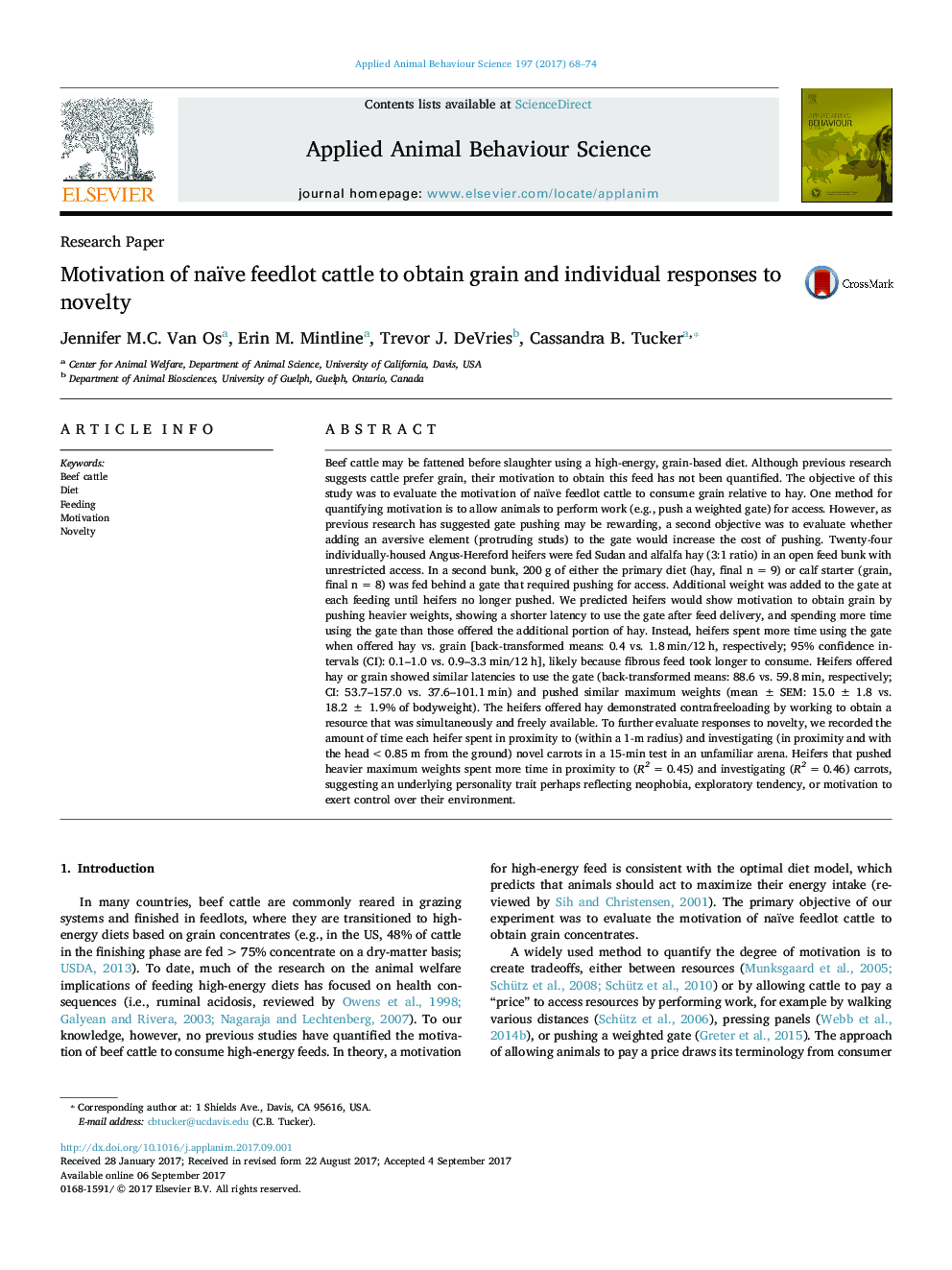| کد مقاله | کد نشریه | سال انتشار | مقاله انگلیسی | نسخه تمام متن |
|---|---|---|---|---|
| 8882885 | 1625309 | 2017 | 7 صفحه PDF | دانلود رایگان |
عنوان انگلیسی مقاله ISI
Motivation of naïve feedlot cattle to obtain grain and individual responses to novelty
دانلود مقاله + سفارش ترجمه
دانلود مقاله ISI انگلیسی
رایگان برای ایرانیان
کلمات کلیدی
موضوعات مرتبط
علوم زیستی و بیوفناوری
علوم کشاورزی و بیولوژیک
علوم دامی و جانورشناسی
پیش نمایش صفحه اول مقاله

چکیده انگلیسی
Beef cattle may be fattened before slaughter using a high-energy, grain-based diet. Although previous research suggests cattle prefer grain, their motivation to obtain this feed has not been quantified. The objective of this study was to evaluate the motivation of naïve feedlot cattle to consume grain relative to hay. One method for quantifying motivation is to allow animals to perform work (e.g., push a weighted gate) for access. However, as previous research has suggested gate pushing may be rewarding, a second objective was to evaluate whether adding an aversive element (protruding studs) to the gate would increase the cost of pushing. Twenty-four individually-housed Angus-Hereford heifers were fed Sudan and alfalfa hay (3:1 ratio) in an open feed bunk with unrestricted access. In a second bunk, 200 g of either the primary diet (hay, final n = 9) or calf starter (grain, final n = 8) was fed behind a gate that required pushing for access. Additional weight was added to the gate at each feeding until heifers no longer pushed. We predicted heifers would show motivation to obtain grain by pushing heavier weights, showing a shorter latency to use the gate after feed delivery, and spending more time using the gate than those offered the additional portion of hay. Instead, heifers spent more time using the gate when offered hay vs. grain [back-transformed means: 0.4 vs. 1.8 min/12 h, respectively; 95% confidence intervals (CI): 0.1-1.0 vs. 0.9-3.3 min/12 h], likely because fibrous feed took longer to consume. Heifers offered hay or grain showed similar latencies to use the gate (back-transformed means: 88.6 vs. 59.8 min, respectively; CI: 53.7-157.0 vs. 37.6-101.1 min) and pushed similar maximum weights (mean ± SEM: 15.0 ± 1.8 vs. 18.2 ± 1.9% of bodyweight). The heifers offered hay demonstrated contrafreeloading by working to obtain a resource that was simultaneously and freely available. To further evaluate responses to novelty, we recorded the amount of time each heifer spent in proximity to (within a 1-m radius) and investigating (in proximity and with the head <0.85 m from the ground) novel carrots in a 15-min test in an unfamiliar arena. Heifers that pushed heavier maximum weights spent more time in proximity to (R2 = 0.45) and investigating (R2 = 0.46) carrots, suggesting an underlying personality trait perhaps reflecting neophobia, exploratory tendency, or motivation to exert control over their environment.
ناشر
Database: Elsevier - ScienceDirect (ساینس دایرکت)
Journal: Applied Animal Behaviour Science - Volume 197, December 2017, Pages 68-74
Journal: Applied Animal Behaviour Science - Volume 197, December 2017, Pages 68-74
نویسندگان
Jennifer M.C. Van Os, Erin M. Mintline, Trevor J. DeVries, Cassandra B. Tucker,